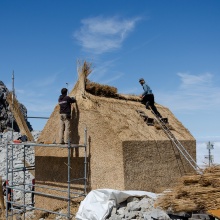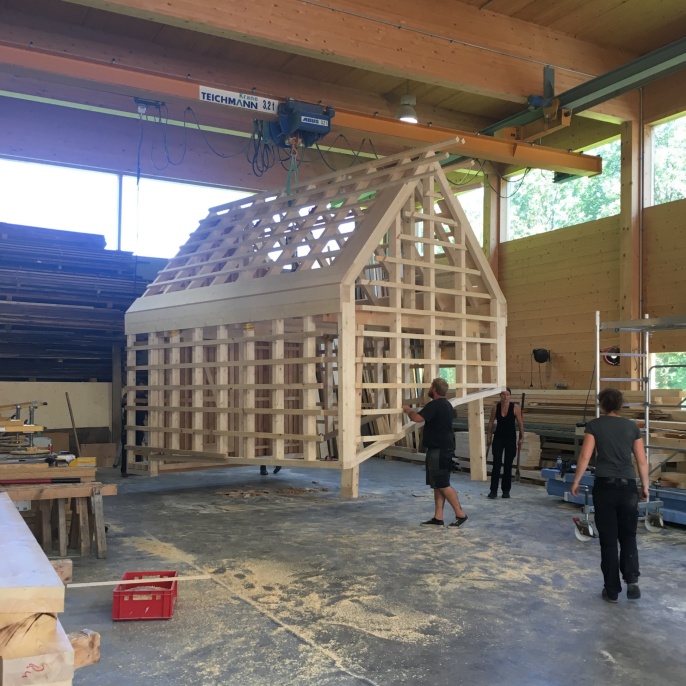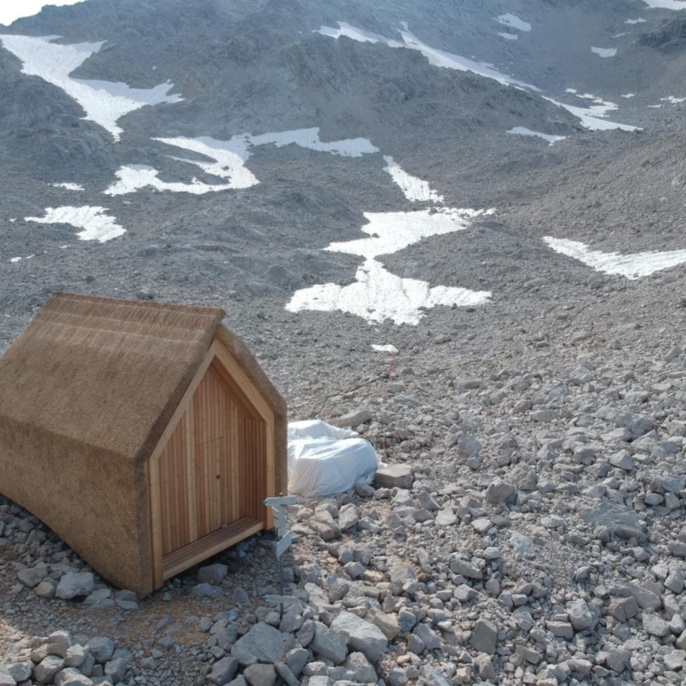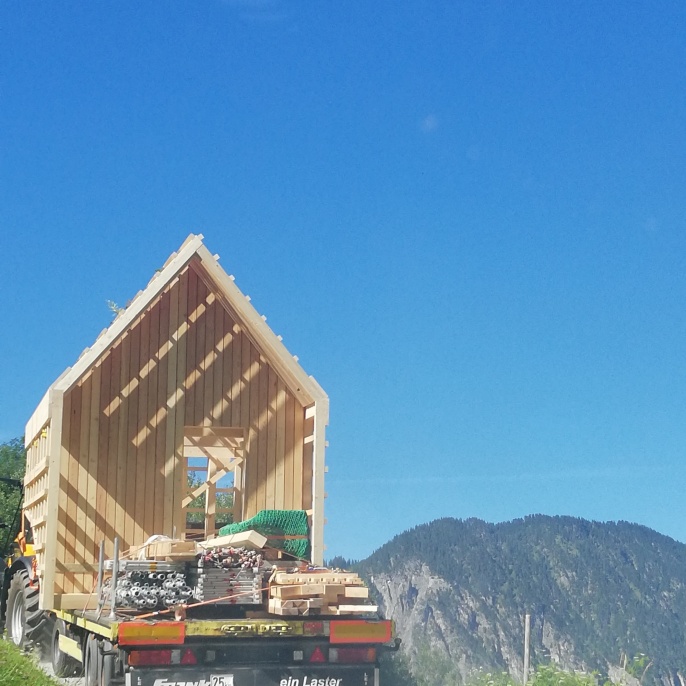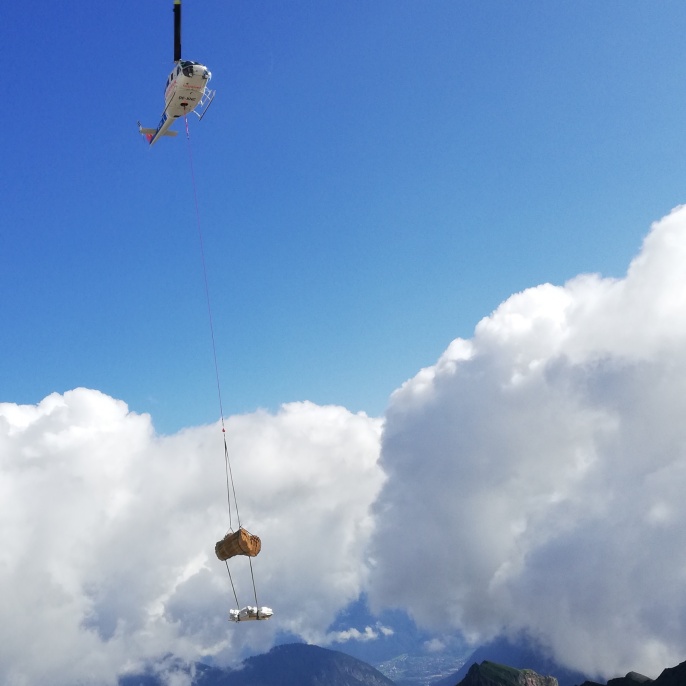Reed as a building material at an altitude of more than 2600 meters? A team of students led by Armin Kammer and Anke Wollbrink, architects from the Institute of Building Technology and Design (IBBTE [de]) of Faculty 1 Architecture and Urban Planning [de] at the University of Stuttgart, implemented this unusual idea. Together with the German Alpine Club and its section in Mannheim, they realized a building envelope that is almost entirely made of reed.
The newly clad water supply building of the Mannheim Hut, which has been in existence for more than a hundred years, is located below the Schesaplana, on the edge of the Brandner Glacier in the Raetikon. The idea comes from courses in which students worked on the sculptural design of mountain huts in their architectural drafts.
Reed is sustainable and environmentally friendly
Materials such as sheet metal, wooden shingles, and bitumen would be equally suitable for this purpose, says Kammer, but they wanted to break new ground. The idea “reed” was born, it is a building material which is best known in northern Germany. A wholesaler was found in Bad Oldeslohe and craftsmen were contacted. The concerns for Landscape Protection because reed isn’t a local material could quickly be dispelled: “Apart from stone, ice, moss, and lichen, nothing else is obtained locally,” says Armin Kammer. And the material is by no means unusual if you think of thatched farmhouses in the Black Forest or the stilt houses in Unteruhldingen on the shore of Lake Constance. “Reed used to be a common material all over the world before marshlands disappeared due to drainage,” says Kammer, raving about the sustainability of reed and that it is not at all old-fashioned.
It grows fast, provides a valuable biotope and a habitat for animals, and improves water quality.
Armin Kammer
Only the dead part of the reed is harvested and it can be used without further treatment. The material is durable. Reed thatched roofs usually last between 25 and 40 years. After that, the reed is added to the compost heap. Kammer anticipates that the reed on the mountain will have an even longer durability, because the organic processes are significantly slowed down and the moisture load is low compared with, for example, the conditions on the German North Sea coast. Only the thaw could be detrimental to the reed there once a year. “The mountain is an excellent habitat for reed,” Kammer emphasizes.
Craftsmen take two weeks to clad the wooden structure with reed
In this high alpine region, the weather only permits construction work usually for about three months, from July to September. In the summer of 2019, carpenters made a wooden substructure for the reed in a workshop in Brand (Austria). The substructure, which was about three and a half by six meters and up to four meters high, was then flown up the mountain by helicopter. The short-stemmed reed came from Lake Neusiedl. Kammer: “However, most reed nowadays comes from Turkey and Romania. There are still large cultivation areas there.” Craftsmen from Berlin-Brandenburg and from the North Sea island of Amrum, who are specialized in working with reed as a building material, used the material locally. It took a little less than two weeks to clad the substructure. The result is impressive. The Alpine Club and Armin Kammer with his team are satisfied and secretly hope that building with the “waste product” reed will become popular again.
New “emergency bivouac” project is planned
There is no follow-up project with reed yet, but the Alpine Club has a new project. “There is always a need for small room units for sleeping areas with sanitary modules,” Kammer explains. “Cocoon” is the name of the new project, in which complete emergency bivouacs are made in the lowlands and are then placed on the mountain by helicopter. Six people could find shelter in the bivouacs, which are 2.50 by 2.50 meters in size.
Armin Kammer and Anke Wollbrink
Faculty 1 Architecture and Urban Planning, University of Stuttgart


